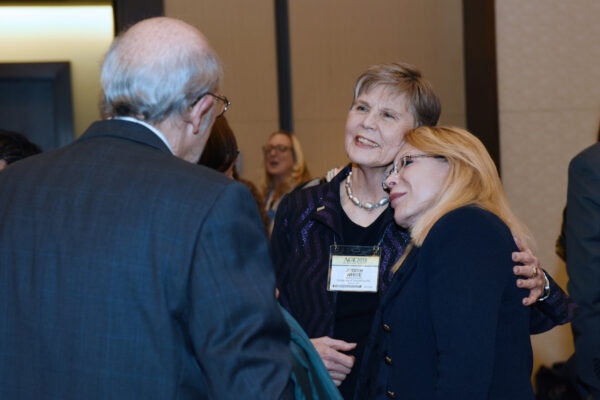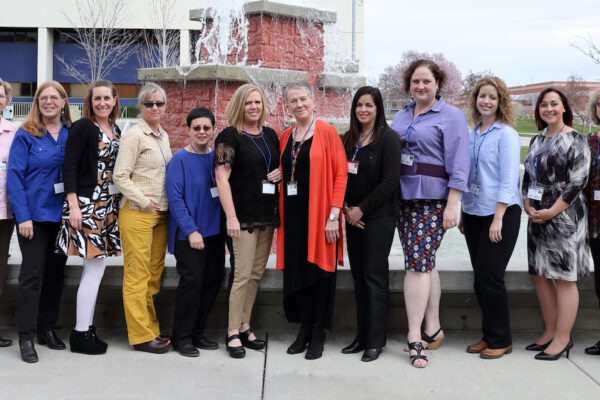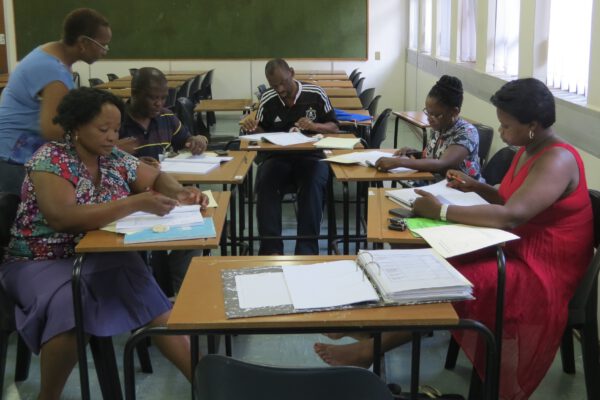By Lisa Guion Jones
There has been progress in increasing the number of women leaders in higher education over the years, but the progress has been slow. According to ACE’s American College President Study 2017, only 30 percent of the nation’s college and university presidents are women, up by just a few percentage points over the past decade. ACE’s collaborative, multi-association national initiative, Moving the Needle, seeks to increase the number of women leaders, with a goal that at least 50 percent of college and university presidents will be women by 2030. The ACE Women’s Networks serve to build the pipeline of women across the nation who are prepared to advance to senior and executive level positions in the academy. To do this, the state networks must be active and robust.
As an ACE Fellow in 2015–16, I knew the importance of the ACE Women’s Network and immediately sought to connect with the network upon moving to Florida for a new position at the University of Central Florida (UCF) in August 2016. Florida was one of the first three states to join the ACE NIP program, along with California and New York. But although Florida maintained that network actively for several years, I was quite disheartened to learn that it had gone dormant by the time I arrived. With support, encouragement and commitment from President John Hitt and President-Elect Dale Whittaker, UCF reactivated the ACE Women’s Network of Florida. Here’s how we did it.
Solid Foundation and Structure
Presidential Sponsors
Florida is a large state with outstanding colleges and universities of all sizes and types. We wanted presidential sponsors that reflected this diversity. Our sponsors lead large public universities, private institutions, and a state community college. Their main responsibilities are to provide moral support and advice to the state chair, bring recognition to the network, and encourage participation. In addition, in Florida, presidential sponsors are asked to appoint one senior-level administrator to serve on the network’s executive board, provide staffing assistance and funding to host an ACE Women’s Network of Florida State Conference on their campus on a rotating basis, make a presentation at the state conference when it is held on their campus, and assist in securing other senior-level speakers from across the state and nation.
We used networking and leveraged our partnerships to secure our presidential sponsors. We are honored to have six distinguished, highly respected sponsors (alphabetical order): Cynthia Bioteau, president of Florida State College at Jacksonville; Judy Genshaft, president of University of South Florida; John Hitt, president of University of Central Florida; Wendy Libby, president of Stetson University; T. Dwayne McCay, president of Florida Institute of Technology; and Mark Rosenberg, president of Florida International University.
Executive Board
Given that one of the responsibilities of our presidential sponsors is to appoint one or two leaders to the executive board, our board inherently has geographic and institutional diversity. As I created the board, I continued to look for gaps in institutional representation. For example, I sought out a leader from a Historically Black College or University. I also believed it was important to include someone who worked at a systems level who thinks across universities and can bring that insight to the board. I was also intentional in including women at all different levels of administration/leadership and at different stages in their career.
Finally, our board represents women from different disciplines, including sponsored research, academic affairs, faculty affairs, teaching and learning, institutional effectiveness, communications and marketing, advancement, and other areas. This gives us the opportunity to leverage the different knowledge and skill sets of the women for the benefit of the network. For example, the board member who works in communications and marketing holds the social media chair position. With this purposefulness at the forefront, we were able to build a robust and inclusive ACE Women’s Network of Florida Executive Board consisting of 14 dynamic women. This hard-working, dedicated board is essential to the network’s success.
Institutional Representatives
Institutional representatives are instrumental to success by providing direct programming for women on campuses across the state. Today, we are proud to have institutional representatives at 37 campuses. We have worked diligently to gain representation from a wide range of institution types.
How did we secure so many institutional partners in less than one year? One strategy I employed was to work through my provost at the time, Dale Whittaker, to get on the agenda for the statewide meeting of provosts in the university system. We targeted provosts because their portfolio typically includes faculty affairs, women’s studies, centers for the success of women faculty, and other similar programs that would be natural partners for the network. We have 11 of the 12 universities in the State University System of Florida participating in the Florida Network thus far.
To reach out to private institutions, I used the Independent Colleges and Universities of Florida (ICUF), which is an association of 29 accredited private, educational institutions across the state. We have nearly half (13) of ICUF private institutions as part of the network to date. A letter describing the network and soliciting representatives was sent to the president’s office of all 28 state and community colleges in the Florida College System. Currently 43 percent (12) of the state colleges are a part of the Florida Network.
We believe this diversity of institutions is an asset and will enhance the impact we will have as a network. The ACE Women’s Network of Florida aspires to one day have an institutional representative on every accredited college and university campus in the state. The board is developing a recruitment plan.

Strategies for Success
In the short time we have worked to revitalize the Florida Network, we have found points of success and a lot of work ahead. Here are the most important strategies we used to revitalize our network:
A committed state chair. Each network needs a state chair who has the time and energy to commit. Due to the immense time commitment and background work involved, the state chair must be someone willing and able to invest in laying the groundwork for revitalization. This leader needs to ensure she has the support of her campus president and her supervisor if she does not report to the president. It may be possible to negotiate for a small percentage of the state chair’s time to be dedicated for at least the first year. After the first year, the state chair should have a full team to assist her and be laser focused on succession planning to engage and train the future leaders of the network.
A supportive and engaged presidential sponsor and liaison. Presidential sponsors provide support and advice to the state chair when possible and designate an administrator as the point of contact. They bring recognition to and encourage participation in the network. Our Women’s Network Executive Council liaison is extremely helpful.
Partnerships are key. The Florida Network is partnering with the Florida Consortium of Metropolitan Research Universities, a collaborative partnership between Florida International University, the University of Central Florida, and the University of South Florida, formed with consultation and support from the Helios Education Foundation. We will be seeking other partners, inside and outside of higher education, that share a commitment to the development and advancement of women in leadership.
Research your state networks. If there was an active network previously, learn as much as you can about why it became inactive. Make the effort to contact and hold conversations with former officers to see what, if any, pitfalls they suggest avoiding. Ask any of the former officers or members of the network if they would like to be involved in reactivating the network. Read the ACE Women’s Network State Chairs Handbook and look at the bylaws, websites, and information from other state networks. When you come across a state that is very active and doing some of the initiatives and programs that your network might like to do, contact the state chair to arrange a consultation.
Recruit and engage diverse executive board members and institutional representatives. These individuals will contribute their unique experiences, perspectives, skills, and passion to your network. It is critical that you provide orientations and onboarding so that individuals rally around the shared vision of moving the needle, and understand the mission and goals of the network, as well as their roles and responsibilities.
Pitfalls to Avoid
A lack of buy-in. Members of the network must feel that there is value in being a part of the network. State chairs, officers, or committee leaders who micromanage hinder buy-in from other members of the network. If someone has zero ownership, no input into decisions, and can’t provide feedback, she tends to disengage emotionally.
A lack of accountability. There must be checks and balances as well as ongoing monitoring. It is important to not only set expectations, but also provide the support and information to help officers and other leaders in the network fulfill their responsibilities.
Biting off more than you can chew. Goals are needed to provide focus, yet having too many goals can set a network up for failure. It is important to have early wins to get the momentum going when revitalizing a network. Everyone likes to be affiliated with something that is successful. The Florida Network utilizes collaborative goal setting during strategic visioning sessions to continuously streamline our efforts and set strategic priorities.
Team homogeneity. By attracting team members who represent the full diversity of your state, as we did with the Florida Network, you can avoid groupthink and exclusivity. You can also demonstrate that your network is inclusive. Additionally, it is possible to have leader burnout and overload. Projects often have multiple team leads (e.g., co-chairs) with their own agendas, desires, and to-do lists. An unclear delineation of responsibilities between these various leaders will result in confusion, frustration, and dysfunction. The Florida Network bylaws clearly describe each role and the associated responsibilities. While the roles are different, we stress connectivity and interdependence.
It has only been one year since revitalizing the ACE Women’s Network of Florida. There is still much work to do. We are passionate about supporting the development and advancement of highly talented women in higher education across the state. We view this work as a labor of love not only for those women currently in higher education but for future generations of women as well.
If you have any questions or comments about this blog post, please contact us.


